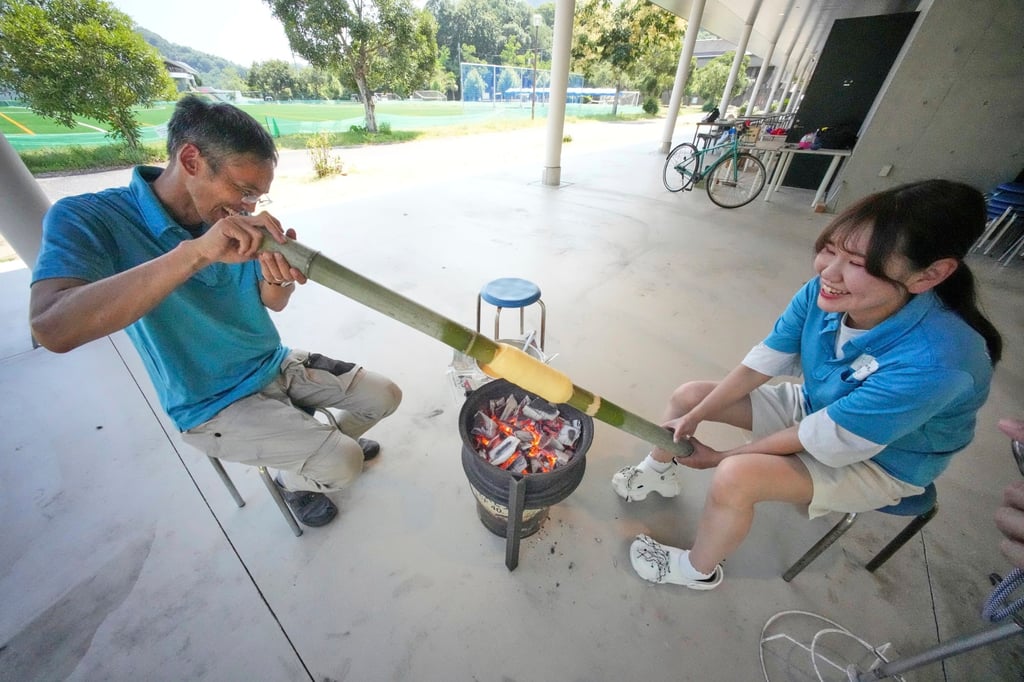Baumkuchen originated in Germany but has become a wildly popular sweet in Japan, where a prisoner of war on a small western island started making the treat that has thrived in its new homeland.
Today, the confectionery known as “tree cake” because of the resemblance to a trunk with rings is considered a symbol of longevity and prosperity in Japan, where Baumkuchen festivals are regularly held.
Japanese adaptations, including those using matcha and sweet potatoes, are popular gifts at weddings and birthdays. Baumkuchen is sold in gift boxes at luxury department stores and individually wrapped, smaller versions can be found at convenience stores.
The sweet’s early years, however, are associated with a catastrophic earthquake and two world wars.

Making Baumkuchen is one of the most popular activities on Ninoshima, just a 20-minute ferry ride from Hiroshima. But visitors also must learn the sleepy island’s role in Japan’s wartime history, according to Kazuaki Otani, head of the Juchheim Ninoshima Welcome Centre.
At the outdoor centre built over the site of a prisoner of war camp, amateur bakers pour batter on a bamboo pole and roast the mixture over a charcoal fire. As the surface turns light brown, a new layer is poured, creating brown rings as the cake grows thicker and the sweet smell wafts through the picnic area.


